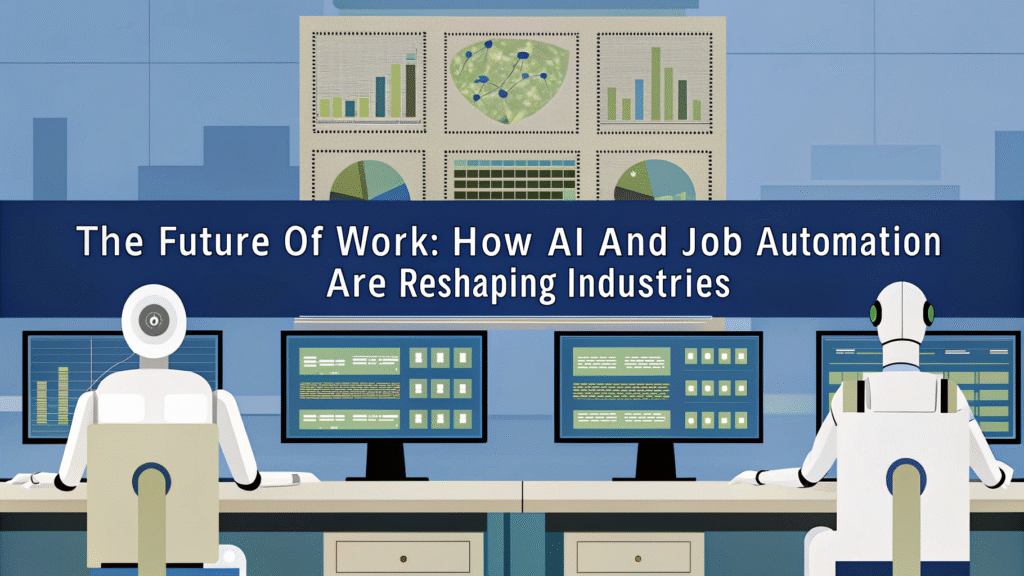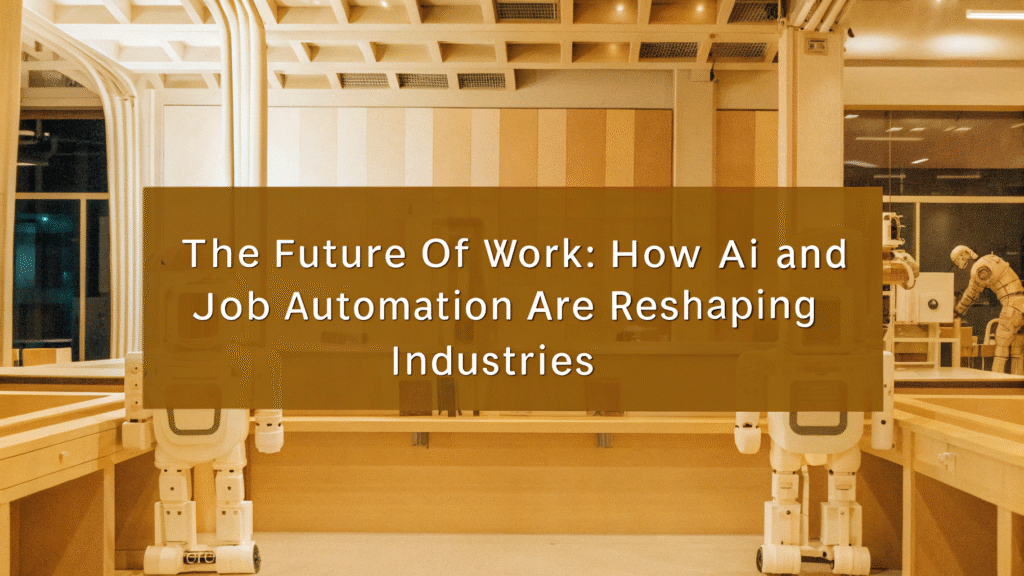
Introduction
The conversation around AI and job automation often swings between two extremes: a utopian future free from tedious labor or a dystopian one where humans are obsolete. The reality, as is often the case, lies somewhere in the middle. Artificial intelligence is undeniably transforming the workplace, but its impact is less about total replacement and more about a profound realignment of roles and skills.
For entrepreneurs, marketers, and content creators, understanding this shift is not just an academic exercise—it’s a critical component of future-proofing careers and businesses. This guide will explore the evolution of AI and job automation, identify the key challenges and opportunities, and provide actionable strategies to not just survive but thrive in this new era of work.
History & Evolution
The concept of machines replacing human labor is not new. The Industrial Revolution caused similar anxieties centuries ago. However, the current wave of automation, powered by AI, is different in its speed, scale, and cognitive capabilities.
- Early Automation (1960s-1990s): This era was defined by robotics in manufacturing. Machines like the Unimate arm took over repetitive, physical tasks on assembly lines, increasing efficiency but largely affecting blue-collar jobs.
- Software and Digital Automation (2000s-2010s): The rise of powerful software automated many administrative and data-entry tasks. Think spreadsheets replacing manual ledgers or enterprise resource planning (ERP) systems streamlining business processes. This began to impact white-collar roles.
- The Cognitive Era (2020-Present): Today’s AI, especially generative AI, can perform cognitive tasks once thought to be exclusively human. It can write code, draft marketing copy, create images, and analyze complex data. Consequently, this wave of AI and job automation is directly impacting creative and knowledge-based professions.
Audience & Demographics
The impact of AI and job automation is broad, but certain groups are on the front lines of this transformation.
- Entrepreneurs & Business Owners: They face a dual challenge: implementing AI to boost productivity and efficiency while managing the human impact on their workforce. Their decisions will shape how automation is adopted.
- Marketers & Advertisers: This group is heavily impacted, as AI can automate A/B testing, audience segmentation, ad buying, and even creative generation. The focus is shifting from execution to high-level strategy and oversight.
- Content Creators & Creatives: Writers, designers, and artists are seeing AI tools that can perform tasks central to their identity. The challenge is to leverage these tools for augmentation without being replaced by them.
- Administrative & Data Entry Professionals: Roles focused on repetitive data processing, scheduling, and basic customer service are among the most susceptible to full automation.
Key Features & Functions
Understanding what AI can do helps clarify which jobs are most affected.
- Task Automation: AI excels at taking over specific, rule-based, or repetitive tasks within a job. For example, it can sort emails, transcribe meetings, or perform basic photo edits.
- Data Analysis and Prediction: Machine learning algorithms can analyze vast datasets to identify trends, forecast sales, or detect fraud far faster and more accurately than a human.
- Content Generation: Generative AI can produce human-like text, images, code, and audio, automating parts of the creative and development process.
- Process Optimization: AI can analyze entire workflows and suggest or implement changes to make them more efficient, from supply chain logistics to customer support routing.
Business & Marketing Potential
Rather than just a threat, AI and job automation offer significant potential for savvy businesses and professionals.
- Increased Productivity and Efficiency: By automating mundane tasks, AI frees up human employees to focus on strategic, creative, and interpersonal work that drives real value.
- Enhanced Creativity and Innovation: AI can act as a creative partner, generating ideas, providing data-driven insights, and handling the grunt work, allowing creators to focus on the bigger picture.
- Hyper-Personalization at Scale: Marketers can use AI to deliver highly personalized experiences to millions of customers simultaneously, something that would be impossible with a human-only team.
- Creation of New Roles: The AI revolution is creating new jobs that didn’t exist a decade ago, such as AI Ethicists, Prompt Engineers, and AI System Trainers.
Best Practices & Tips
Here’s how to adapt and prepare for the ongoing changes.
- Focus on Human-Centric Skills: Cultivate skills that AI cannot easily replicate: critical thinking, emotional intelligence, complex problem-solving, creativity, and leadership.
- Adopt a Mindset of Continuous Learning (Upskilling & Reskilling): The shelf life of technical skills is shrinking. Commit to lifelong learning to stay relevant, whether it’s learning how to use new AI tools or developing adjacent skills.
- Augment, Don’t Just Automate: Look for ways to integrate AI as a tool to enhance human capabilities, not just replace them. Use AI to handle the “how” so you can focus on the “why” and “what.”
- For Leaders: Invest in Your People: Instead of a “replace” strategy, adopt a “retrain” strategy. Provide your team with the training and resources they need to work alongside AI effectively. This builds loyalty and retains valuable institutional knowledge.
Challenges & Limitations
The transition is not without its difficulties.
- Job Displacement and Economic Inequality: While new jobs are created, others are lost. There is a real risk that this transition could exacerbate income inequality if the gains are not widely shared and displaced workers are not supported.
- The Skills Gap: The demand for AI-related skills is growing faster than the supply of qualified workers, creating a significant gap in the labor market.
- Over-reliance and Loss of Skills: If we offload too much thinking to AI, there’s a danger that core human skills and expertise could atrophy over time.
- Implementation Costs and Complexity: For small businesses, the cost and expertise required to implement sophisticated AI systems can be a significant barrier to entry.
Future Outlook
The relationship between AI and job automation will continue to evolve rapidly.
- AI as a Universal Assistant: Soon, AI assistants will be standard for most knowledge workers. They will help manage schedules, draft communications, and summarize information.
- The Rise of the “Centaur” Worker: The most successful professionals will be like mythological centaurs. They combine human intelligence with AI capabilities, each enhancing the other.
- Shift in Education: Schools will need to move away from rote memorization. Instead, they should focus on creativity, critical thinking, and digital literacy from an early age.
- Policy and Social Safety Nets: Public debate will grow around Universal Basic Income (UBI), retraining programs, and other safety nets. These policies aim to support workers during the transition.

Conclusion
AI and job automation are not a future event to be feared but a present reality to be navigated. The narrative of “human vs. machine” is misleading; the more accurate and productive framing is “human with machine.” The most valuable professionals of tomorrow will be those who can leverage AI to amplify their uniquely human talents.
For entrepreneurs, marketers, and creators, the path forward involves embracing change and committing to continuous learning. Focus on the strategic and creative skills that AI can enhance but never replace. By doing this, you position yourself not as a victim of automation, but as an architect of the future of work.